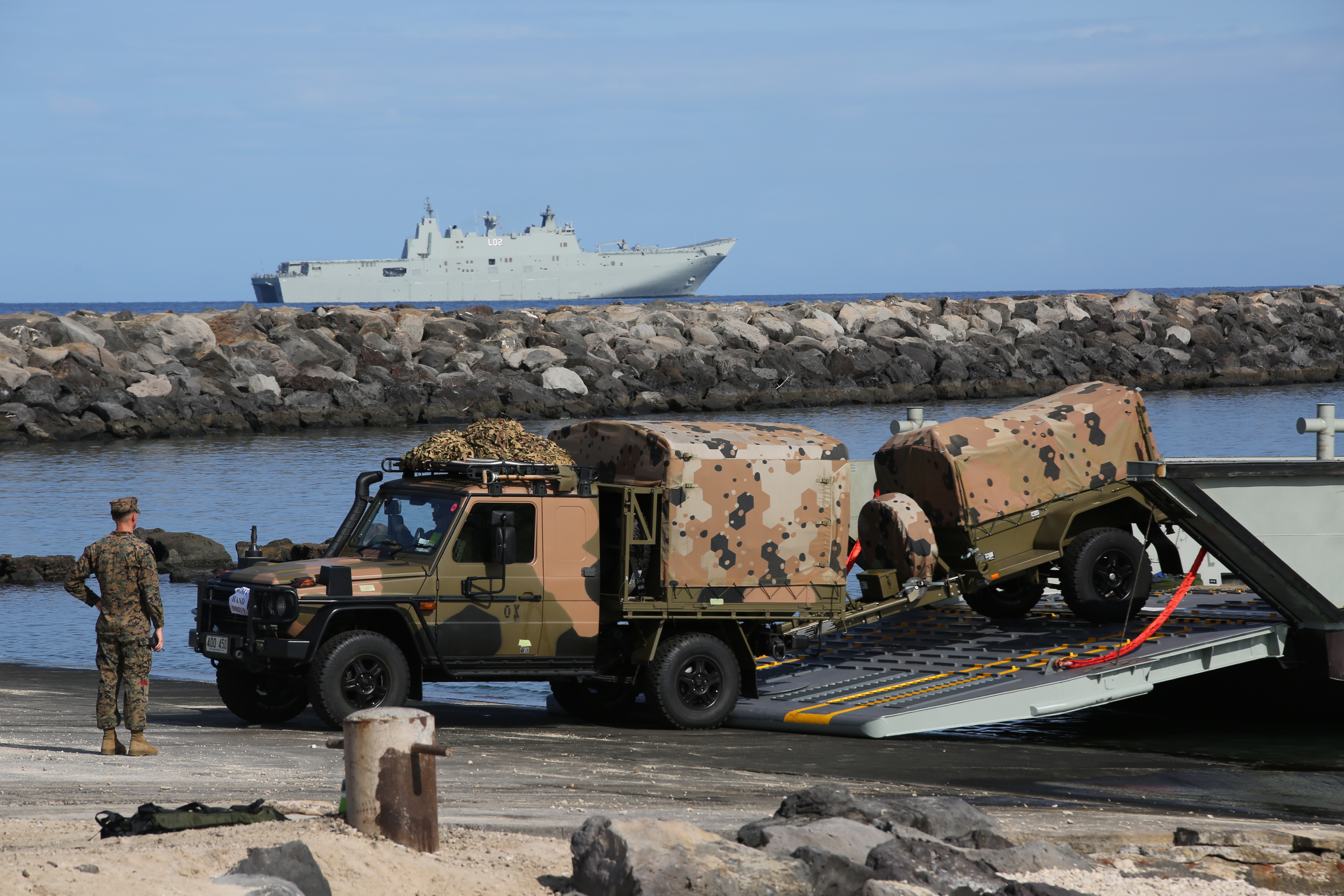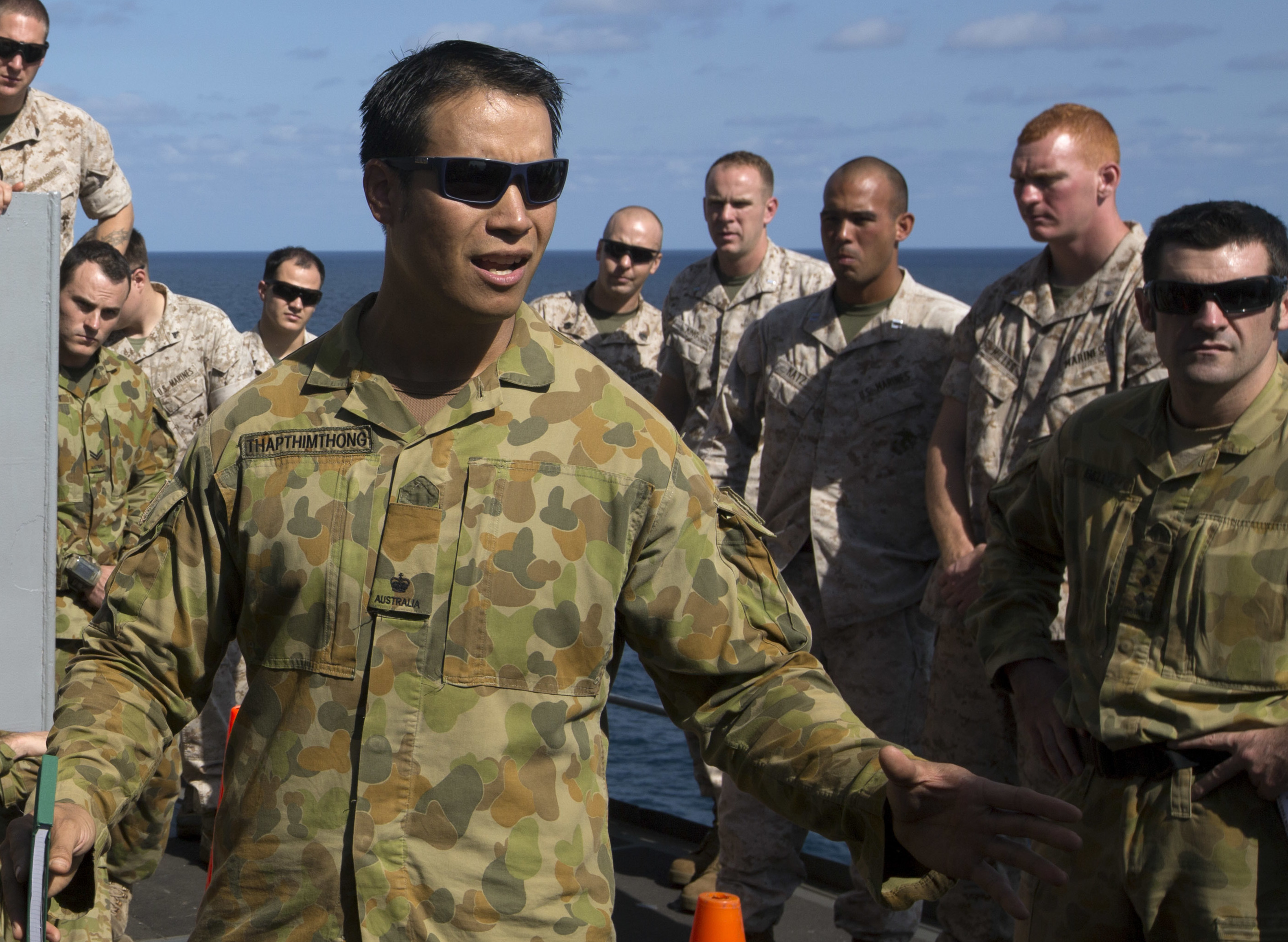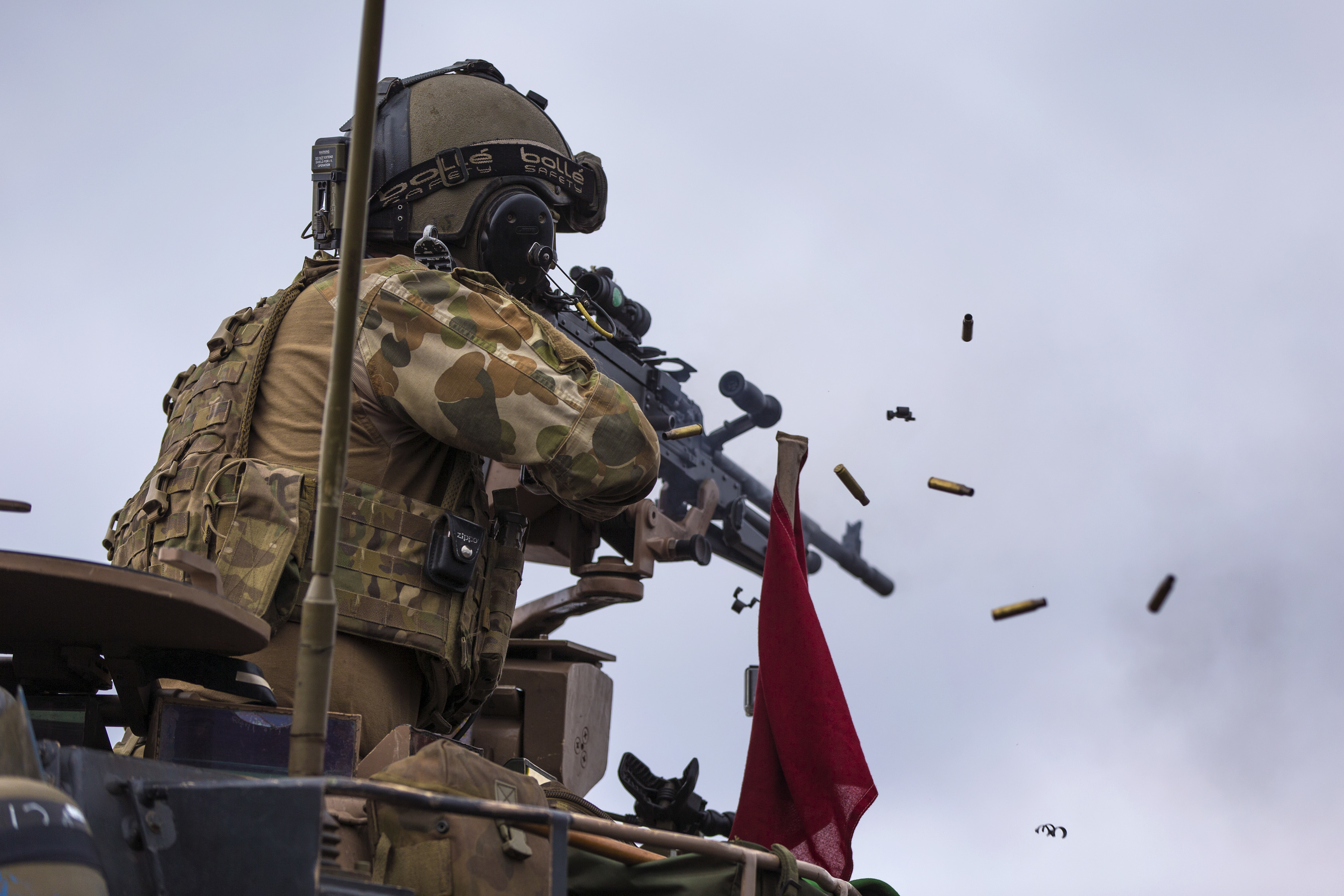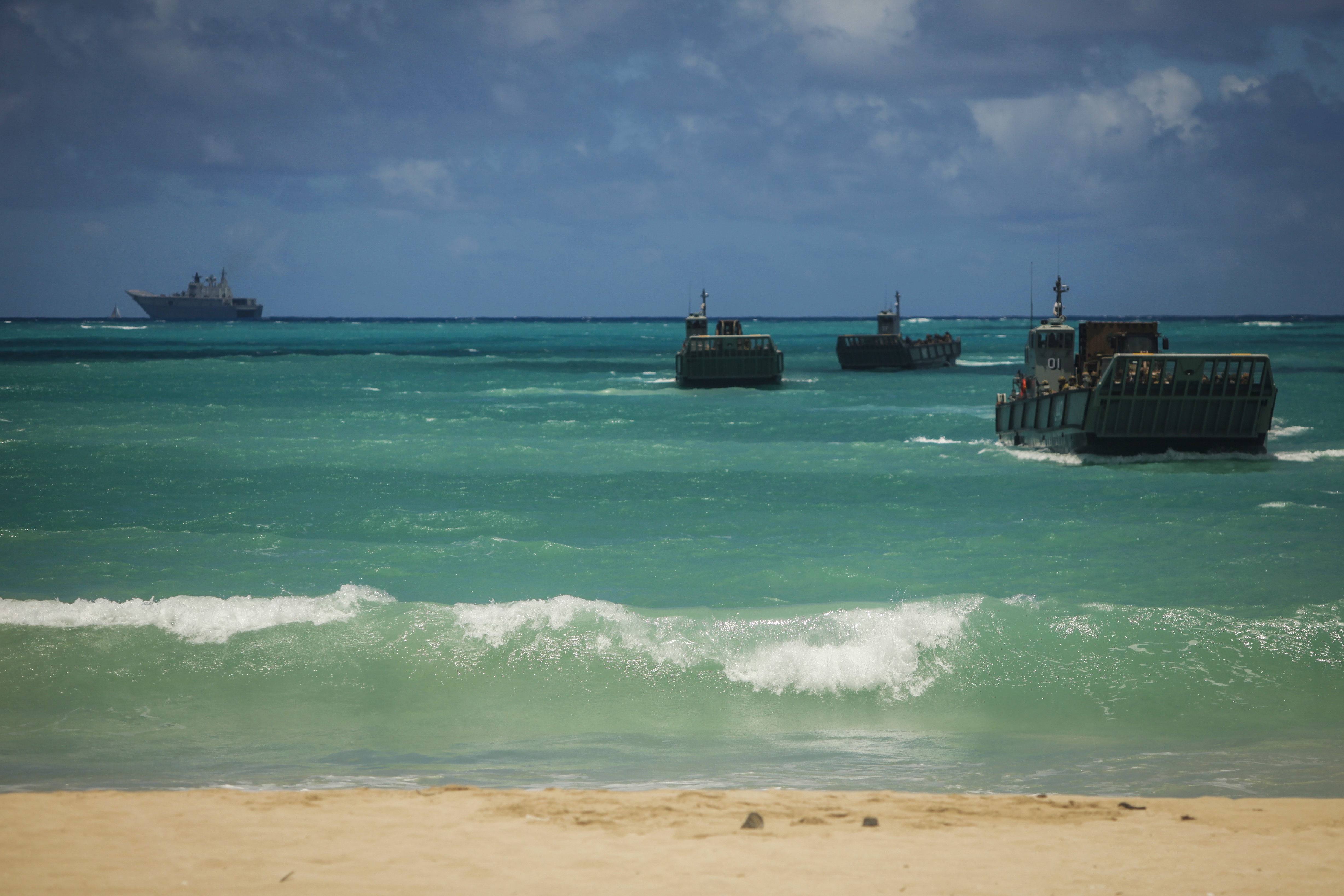
POHAKULOA TRAINING AREA, HAWAII – The Rim of the Pacific 2016 exercise has given the Australian landing force a well-timed opportunity: soldiers from the 2nd Battalion, Royal Australian Regiment (2 RAR) played a central role in three-ship Amphibious Ready Group operations off Hawaii ahead of conducting ARG operations on their own for the first time ever next year.
2 RAR is at the core of the Australian army’s transition from a strictly ground force to an amphibious force, with next year’s ARG deployment being the last major milestone.
“We are incrementally developing our amphibious capabilities, it’s a three-stage process: the first one is called an amphibious ready element, about a company size. The one we’re doing this year is called an amphibious ready unit, which is two companies and some support elements, one ship. And then next year is … the amphibious ready group, three ships, a whole battalion, a whole bunch of stuff,” Maj. Richard Thapthimthong, operations officer for 2 RAR, told USNI News during a RIMPAC ground combat training event.

“And to get ready for that, we’re experiencing an ARG now, so we’re experiencing what’s it like when you can’t talk to your [commanding officer] who is on a different ship, what’s it like when your communications go down, stuff like that. This is a really good experience for us and I’m glad the Australian government was willing to send so many” troops to RIMPAC – about twice as many as 2014.
RIMPAC’s “provisional” Marine Expeditionary Brigade, assembled with forces from eight countries solely for the duration of the exercise, centers around two ground units: 2nd Battalion 3rd Marines from the U.S. Marine Corps and 2 RAR from Australia. Thapthimthong said the two battalions had comparable skills when it came to infantry combat, but he said the Aussies were lucky to work side-by-side with the Americans and observe best practices for getting the battalion and its gear on and off a ship, for organizing troops across three ships prior to an amphibious assault, and other ARG-level skills 2 RAR had not yet been able to finesse on its own.

“The Marines have been doing this a long time, so seeing how they do it is really valuable for us,” he said.
Real-world operational requirements forced the Australians to practice one-ship amphibious operations earlier this year, when the category 5 Tropical Cyclone Winston slammed into Fiji.
“We’ve just been certified on HMAS Canberra (L02) for the conduct of [humanitarian assistance/disaster relief] and [non-combatant evacuation operations], and we were tested earlier this year when Tropical Cyclone Winston hit Fiji,” Thapthimthong said.
“We had about two days’ notice to get everyone on the ship, get them prepared and sail on over to help. What was really good about that was, the training that we did prior to that – be it for warfighting, but just that complex process of getting on and getting off the ship, getting all the stuff in order, really came into play when we got to Fiji, it was exactly as we practiced.”

Capt. Tim Gommars, the joint force team commander for 108th battery in 2 RAR told USNI News while awaiting an artillery raid rehearsal that RIMPAC fit in nicely with Australia’s amphibious capability build-up. His battery was working with an American battery to observe how the Marines loaded howitzers and other larger weapons onto an amphibious ship, how they maintained the guns on the ship in confined spaces, and how they deployed from the ship. 108th Battery didn’t bring any guns to RIMPAC this year, opting instead to observe the U.S. Marines ahead of next year’s introduction of heavy weapons to the ARG.
Whereas the act of an artillery raid – carrying a howitzer to a forward location via a helicopter – wasn’t anything new for Gommars and his team, “we’re essentially just getting an amphibious perspective on it with A Battery (in 1st Battalion 12th Marines), because the amphibious capability is fairly new for us and we’re still building it up, so we’re here with a more amphibious spin whereas in the past we might have done it from land to land.”
Australia sent more than 1,600 soldiers, sailors and airmen to RIMPAC 2016, compared to about half that in 2014. Thapthimthong said the decision to boost its presence this year wasn’t directly tied to next year’s ARG operations but rather happened to be a lucky coincidence.

“It was a strategic decision that’s I think having much more benefit than they originally thought,” he said. The larger Aussie force also means more opportunities to work with international militaries. He said the Australian army has close relationships with the U.S., New Zealand and Tonga. His soldiers have seen “familiar faces” among the Indonesian and Malaysian troops. And RIMPAC has created an opportunity to make new friends from countries like South Korea, which Australia doesn’t work as closely with.
Ultimately, Thapthimthong said that learning amphibious operations best practices and creating new Pacific partnerships were both big wins for 2 RAR this year.
“Once [the Australian military] made the choice, it seemed like the most obvious choice to focus on amphibious operations: I mean, we’re an island, you know what I mean?” he said.
“And all the stuff we do is helping out the nations that surround us, Fiji was a prime example of that.”





